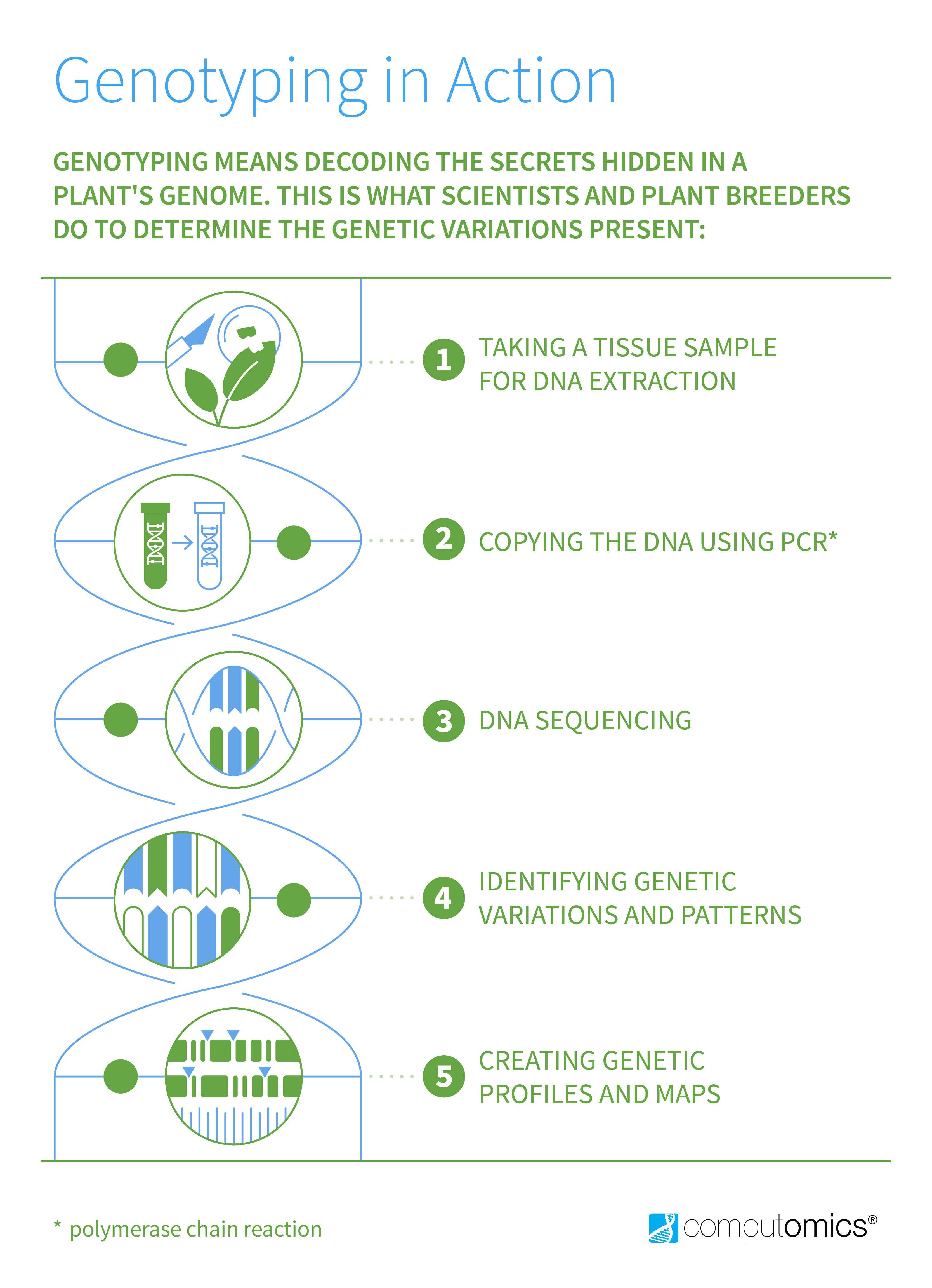Germany
April 15, 2024
Here we are again, dear friends of plant science and plant breeding! After exploring phenotype and phenotyping in the last post, today we look into genotyping. Genotyping is a powerful tool that holds the key to truly game-changing plant breeding and shaping the future of agriculture. Together, we'll learn what's behind genotyping and dive into its applications, importance, and the challenges it brings. So grab your lab coat and get ready to read more about the very core of plant genetics.

The genetic blueprint of plants
We already know that the phenotype is the appearance of the plant (or any organism), i.e. all the characteristics of a plant, which in the broadest sense includes all external and internal structures and functions. It is determined by the genotype (G), the environment (E) in which the plant grows, and the interaction of both (GxE). The genotype, in turn, is the sum of all genes of a plant, the genetic makeup. It represents the genetic blueprint.
Genotyping is the process of identifying the specific variations in the genetic makeup - also called alleles - of individual plants. It helps us to read and understand the plant's blueprint so that we can improve plants based on DNA (or deoxyribonucleic acid, a series of molecules that contain the genetic instructions for the development, function, growth, and reproduction of all known living organisms). How does it work? By genotyping, we analyze an individual's DNA sequence and compare it to a reference sequence - which is a well-characterized genome from the same species - or to the DNA of another plant. By studying these differences, scientists can gain insight into the plant's traits and breeding potential.
Studying the variations
Genotyping focuses on the variations in DNA between individual plants and within whole populations. These are called “genetic polymorphisms”. Scientists study these variations to understand traits, improve crops, and ensure plant diversity. It's like looking at different blueprints for our house, one where the kitchen and living room are next to each other and the other where there is no living room. In plant breeding, polymorphisms are invaluable natural biomarkers - naturally occurring characteristics by which physiological processes, diseases, etc. can be identified. They help us to track the inheritance of certain genes, determine their exact position, and learn which genes are behind a phenotypic expression. They lead us to the genes responsible for desirable plant traits, be it disease resistance, high yield, or nutrient content. Probably the most common type of genetic variation are single nucleotide polymorphisms or SNPs (pronounced "snips").
Genotyping in action
But what do scientists and plant breeders do when they want to determine the genetic variations present? The first step is to take a tissue sample, usually leaves, for DNA extraction. As this involves such small amounts of DNA and our current equipment is unable to read it, the extracted DNA is copied using PCR (polymerase chain reaction) to facilitate the analysis. DNA sequencing is the process of finding out the exact sequence of the DNA molecules. We are now able to identify genetic variations and patterns within our plant population and create genetic profiles and maps. Such genetic maps show the positions and distances between genes or markers on the chromosomes. With that information, we can determine which genetic variations correlate with certain traits - this is called trait association. In breeding programs, this information is used as a guide to select and cross plants with desired traits and develop new better-adapted varieties.
It should also be mentioned that there are a variety of DNA sequencing methods. These sequencing methods vary in the amount of DNA that can be sequenced within a given time frame, read length, accuracy, cost, and data analysis approaches.